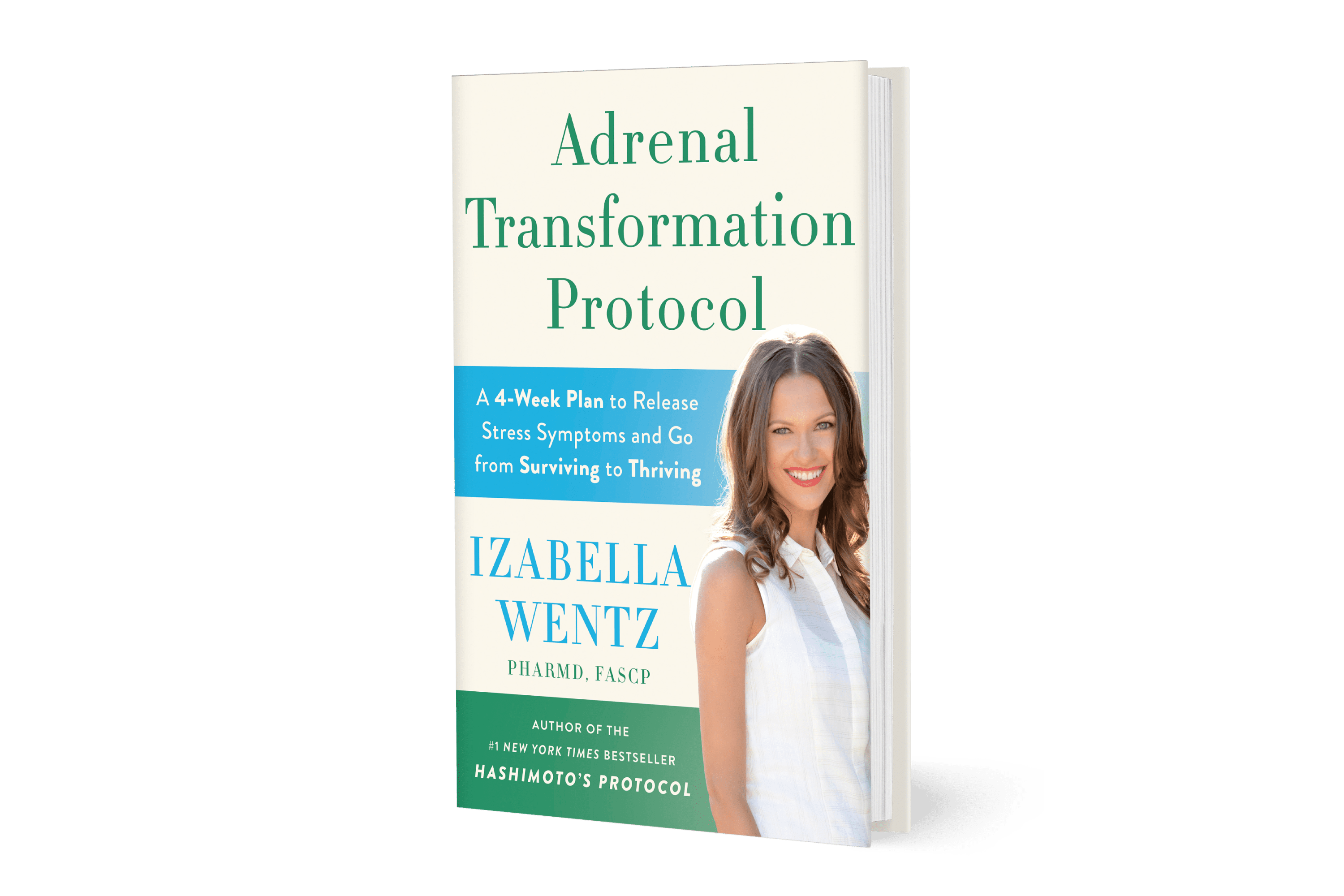Our bodies are constantly receiving messages about our environment and adapting accordingly.
Some signals indicate a threat. These include obvious red flags, such as an infection or toxin, as well as ones you may not have considered, such as inadequate sleep, overexercising, erratic blood sugar levels, poor nutrition, intestinal permeability, and mental and emotional stress (a.k.a. life in the modern world). When the body senses danger, the body will react in a way that tries to keep us safe and ensure our best chance for survival.
In the face of threat, the body will downregulate our metabolism and repair activities to conserve precious resources and allow our fight-or-flight stress response to take over and release extra levels of anti-inflammatory, blood-sugar-liberating cortisol. This response can help our survival when used in response to immediate and short-lived threats but can lead to stress-related symptoms when the perceived threat lingers and we don’t feel safe.
Our bodies have evolved (or are brilliantly designed?) to adapt to what’s needed and maintain equilibrium. A concept referred to as adaptive physiology suggests that our bodies develop chronic illness as an adaptation, or in response to, our environments.
I believe that adrenal, immune, and thyroid issues develop as an adaptive mechanism to protect us in times of perceived danger. These conditions help us survive, but in order to feel our best and thrive, we need to figure out what is setting off the danger signals so we can turn them off and make our bodies understand that they’re safe.
The good news is that there are many things you can do to make your body feel safe—what I call sending “safety signals”—and every element of my Adrenal Transformation Protocol (ATP) is designed to help you do just that. Through the foods we eat (and don’t eat), the ways we act, and the strategies we employ to rest and boost oxytocin (known as the “love hormone”), we can eliminate perceived threats and promote feelings of safety and calm.
The 14 Safety Signals of the Adrenal Transformation Protocol
I firmly believe that adrenal dysfunction develops as an adaptive mechanism to not feeling safe in our environment. We can restore balance through replacing danger signaling patterns and daily habits that no longer serve us with new ones that support safety and healing.
These are the 14 signals that I’ve found to have the most profound effect on establishing that sense of safety, giving us the opportunity to truly transform our adrenals and find healing.
- Nutrient-density – Micronutrient or macronutrient depletions, eating highly processed foods, being in a chronic caloric deficit, and irregular and inconsistent mealtimes can signal to the body that food is scarce, triggering our stress response and survival mode and causing the body to downregulate metabolism. I encourage you to eat high-quality, nutrient-dense foods, eat at regular times, and consume enough calories. This is a powerful safety signal! You may also need to use targeted supplements for any nutrient deficiencies.
- Lowered Inflammation – Poor gut health can be a major source of chronic inflammation, and is a top stressor underlying adrenal imbalance and autoimmune thyroid conditions. We will focus on reducing inflammation in the digestive system by removing the top inflammatory foods, adding gut-supporting foods like bone broth and fermented vegetables, and using targeted supplements like the beneficial yeast Saccharomyces Boulardii. One ATP member said, “The supplements and recipes have been very beneficial in lowering inflammation and allowing me to experience more energy, clarity, and inner calmness again.”
- Balanced Blood Sugar – Wild swings in blood sugar put stress on the body and contribute to adrenal dysfunction, which can often feel like fatigue, irritability, anger, or anxiety. People with adrenal issues tend to struggle with hypoglycemia. We balance blood sugar by lowering carbohydrate intake and focusing on protein and healthy fats at meals, eating breakfast, and eating consistently throughout the day. Magda, an ATP participant, said, “This program really helped me realize different ways that the timing of when you eat and what you eat can make such a difference in symptoms such as fatigue and energy… Blood sugar balance is something I didn’t realize was so pivotal in feeling energy and less fatigue.”
- Hydration – Dehydration impairs the production of ATP, decreases blood flow to the muscles and brain, and disrupts the sleep cycle, leaving us feeling drained, weak, brain foggy, and irritable. You may think only athletes need to replenish electrolytes to stay hydrated, but those of us with adrenal dysfunction and hypothyroidism are often deficient in electrolytes — especially sodium — and stand to gain physical and mental stamina by maintaining adequate levels. Proper rehydration is the key to recovery. 🙂 We can support hydration and electrolyte balance by consuming plenty of high quality salt, bone broth, and an electrolyte supplement if needed.
- Supporting Mitochondria – Over time, chronic stress can damage the physical structure of the mitochondria, the tiny energy producing organelles that live inside our cells, as well as impair the way they work. When mitochondria become damaged or impaired and are no longer working optimally, we may experience low energy, fatigue, and dysregulation of all of our adrenal hormones, including cortisol and estrogen — and the mood changes, low libido, and muscle weakness that can go along with it! We support the mitochondria with key nutrients like essential fatty acids, B vitamins, vitamin C, magnesium, and others.
- Circadian Rhythm Reset – Adrenal function is tied to our circadian rhythm through sleeping and wakefulness signals, hormone release, body temperature, digestion, and metabolism. When this natural rhythm becomes disrupted, our energy levels and sleep are profoundly affected. We may experience daytime fatigue and all-around low energy, or a tired-but-wired feeling that makes it difficult to fall asleep at night, even when the body is exhausted. We can support our circadian rhythm through strategic light exposure, making sure to get plenty of natural sunlight in the morning and during the day, and reducing exposure to artificial light at night.
- Positive Thought Patterns – Research has shown that negative thoughts can cause inflammation in our bodies, which can contribute to the development of autoimmune conditions, gut issues, and mood disorders. (1) We can support a positive, healing mindset with affirmations and learning how to reframe situations in an empowering light. Ludmila said, “One lasting effect of the program that was very helpful is that the spiral of negative self‐talk has gotten so much easier to stop!! And reprogramming how I talk to myself has been a huge help. This program was very helpful in more than just healing from an ailment. It helped me hold more compassion for myself and really helped me stop the cycle of negativity toward myself.”
- Pleasurable Activities – Allocating time for self-care is a way of making sure we have the energy and focus to be present in all of the ways that matter for our loved ones. It can seem a little counterintuitive, but taking time for ourselves enables us to give more to others. It can also counteract stress, which will benefit our adrenals. The oxytocin burst of pleasure shifts us away from stress and creates healing. Spending time with people we love, spending time in nature, aromatherapy, laughing, and having fun are all ways to boost oxytocin.
- Do Something Creative Just Because – It sends a powerful safety signal to the body by rooting us in the present moment, increasing our awareness and mindfulness, and putting us in a perfect balance of sympathetic focus with parasympathetic relaxation and regeneration, known as the “flow state.” It also gives us a boost in dopamine levels. Try drawing, painting, sewing, coloring books, or baking.
- Movement That Makes You Feel Good – We know that movement can help our bodies heal, but in times of adrenal stress, the wrong type of movement can be overwhelming and actually deepen our adrenal dysfunction. We will swap workouts that can raise our cortisol levels, like high intensity interval workouts (HIIT) and chronic cardio, for more gentle forms of movement like walking, Pilates, and yoga. One of my favorite stories about the power of gentle movement when you have adrenal issues is when I told one of my clients with advanced adrenal dysfunction to stop her daily power walks. She was surprised by my recommendation, but gave it a try. To her surprise, she lost those few final stubborn pounds within a couple of weeks! This happened because rest allowed her body to switch into a more anabolic state. When we have low cortisol and overexercise, our bodies can get the message that they are not safe and respond by holding on to weight.
- Slow Your Breath to Retrain Your Brain and Body – We tend to breathe very quickly and shallowly when we are stressed. This, in turn, speeds up our heart rate and shifts the body into a sympathetic state. Taking long, deep breaths signals to our bodies that we are safe and can shift us into a healing, parasympathetic state. Practices we can use to help slow breathing include: prayer, yoga mantras, meditation, biofeedback, and neurofeedback. We can also simply make it a point to pause throughout the day to take a few deep breaths.
- Create Healthy Coping Strategies for Your Triggers – Many of us have unhealthy coping strategies that we turn to in times of stress or when we feel emotionally activated. This could look like eating sweets, drinking alcohol, smoking cigarettes, or doom-scrolling on your phone — basically, anything to distract us from our feelings! We will work on creating new coping strategies that will actually help you feel better, not just distract you from the issue at hand. Every time we respond differently to a trigger, we rewire our brains for healthier patterns. One of my ATP participants, Jacquelyn, found this piece to be particularly compelling: “My personal understanding of myself has improved. I didn’t realize the gravity of the emotional component. I put a lot of work into those exercises and I understand the role my emotions have played in my health journey. I have been trying to protect myself by concealing a personal and emotional trauma from myself for almost 35 years now and this program forced me to face it and to start dealing with it. It’s not pretty but I can handle it now… You have given me tools to truly create a symptom-free life and that has helped save my life.”
- Let Go of the Heaviness That Weighs You Down – Many of us carry the heaviness of resentment, limiting beliefs, and trauma that keeps us stuck in a fight-or-flight state and prevents us from healing. I’ll provide strategies for identifying and working through these beliefs so that your body can find a sense of safety and calm. When we focus on forgiveness, no longer tolerating unnecessary things that add to our stress, replacing negative self-talk and limiting beliefs, and releasing trauma, we really start to let go of that heaviness and move toward our new self.
- Reclaim Your Space by Setting Healthy Boundaries – When we set boundaries, we are protecting ourselves and limiting our exposure to stress while being respectful to others and letting them know what they can expect from us. Studies have linked blurred boundaries to emotional exhaustion, unhealthy lifestyle behaviors, reduced happiness, and a greater risk of family conflict. (2) Learning how to protect our time, say no, and clearly communicate our needs/expectations are key to setting healthy boundaries.
Transform Your Adrenals
Addressing these safety signals is the foundation of the Adrenal Transformation Protocol. This simple four-week program helps you balance your stress response and gradually build up your resilience, to prevent excess stress from overwhelming your adrenals. It will set you up with a strong foundation to return to and stay in homeostasis through turbulence.
I used to believe that healing the adrenals required hormones, sleeping 12+ hours a day, and quitting caffeine for three to 24 months in order to heal, until I found myself in adrenal dysfunction as a new mom and realized that the strategies I once used as a young woman would no longer work. Fortunately, I found a much simpler and more effective solution to transforming your adrenals into a healing state, in just four weeks!
I shifted from surviving to thriving — yes, even as a sleep-deprived new mom who was drinking two cups of coffee per day — and decided to pilot this program with my clients in 2020.
I decided I wanted to create a way for this program to reach even more people, so it could help them reverse their adrenal and thyroid symptoms, in just four weeks. This is how my newest book, Adrenal Transformation Protocol, was born. This is why I wanted to bring everything I’ve learned over the years — through my personal journey and the journeys of thousands of my clients and readers — to one place.
This book is for anyone experiencing brain fog, fatigue, sleep issues, chronic pain, low libido, and/or mood issues. If you have come to a healing plateau in your thyroid journey, or are looking for a way to become more resilient in the face of all the stress life throws at you, this book can truly transform your health!
Here’s what participant Alexis shared about the program in this book:
“ATP provides comprehensive yet gentle support. It’s flexible, too — you can implement what works for you now and come back later to incorporate more pieces as you are ready for them. And you can still benefit even if you can’t tolerate supplements. (I wasn’t able to use supplements this first time around but still had dramatic improvement in my sleep and other symptoms.) I think it’s great at providing exposure to a LOT of different methods for reducing various stressors in your life, whether internal or external. And I wholeheartedly agree with the idea that managing your stress level can have even more impact than shifting your diet (that has certainly been my own experience). So, I appreciate that addressing how you relate to others and creating a sense of safety are such big focus areas. My sleep is much improved. I don’t have words for how much better life is when I can sleep. I can actually think. I can even play my difficult piano pieces again (very challenging if not impossible before due to brain fog). Much less fatigue as well (I don’t have to lie down most of the day anymore), and a decrease in most other symptoms.”
Over 3,500 people have now been through my Adrenal Transformation Program, and participants have seen staggering improvements:
- 92% had reduced mental fog
- 89% reported reduced fatigue
- 89% reported reduced forgetfulness
- 86% reported reduced anxiety
- 85% felt less irritable
- 83% improved their cold tolerance
- 82% improved their morning fatigue
- 81% experienced less trouble sleeping
- 81% improved their libido
- 80% reduced feelings of nervousness
- 78% reduced feelings of depression
- 77% experienced reduced emotional lability
- 76% reduced their joint pain
I’m so excited to finally share this book with the world. Get your copy now and start transforming your health today!
For future updates, make sure to follow me on Facebook, Instagram, TikTok, and Pinterest!
P.S. Would you take a moment and share this information with anyone who you think might benefit from it? I’m on a mission to spread hope and help as many people as I can!


